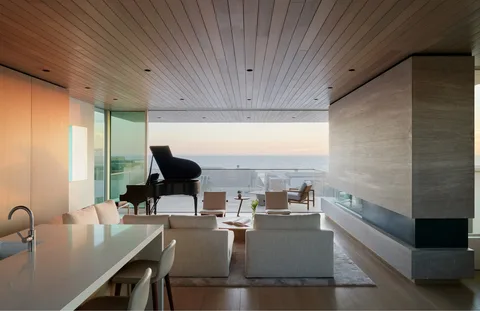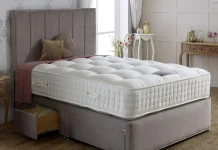As we look ahead to 2025, the architectural landscape continues to evolve rapidly. Design priorities are shifting—no longer just about creating visually stunning buildings, but about combining beauty with adaptability, sustainability, and performance. Clients today expect spaces that can do more than just look good. They want buildings that function well, respond to changing needs, and stand the test of time.
To meet these demands, architects are embracing materials and systems that offer more than surface-level appeal. Below are the top three priorities shaping architecture in 2025—and how the right structural products, like the Marcore dovetail deck, are helping architects meet those goals.
- Form Still Matters—But It’s Smarter Than Ever
Aesthetics remain important in architecture, but in 2025, beauty is increasingly aligned with logic and intent. Modern design embraces minimalism, clean lines, and natural finishes—but these are not chosen for looks alone. Each element of a building’s form must also support function, efficiency, and structural integrity.
Ceiling and floor systems are no longer hidden behind bulky finishes. Instead, architects are selecting exposed systems that contribute to a building’s modern look while serving practical purposes. One example is the Marcore dovetail deck, which offers a sleek, linear-plank ceiling aesthetic when exposed. This design element contributes to both the visual appeal and the acoustical performance of a space, allowing architects to achieve high design standards without sacrificing functionality.
- Function Drives Design at Every Stage
Architects are working more closely than ever with structural engineers and builders to ensure that the materials specified are not just visually appealing, but also practical to install, cost-effective, and structurally sound. This design-build collaboration encourages smarter material selection early in the project.
Products that offer high strength-to-weight ratios, long spans, and multi-purpose utility are increasingly favored. For example, the Marcore dovetail deck is engineered to perform as a composite floor deck, roof deck, or acoustical ceiling—making it one of the most versatile materials available. Its deep, dovetail-shaped ribs provide superior structural performance while allowing for thinner slabs, which can help reduce overall building height and weight.
These types of products not only speed up construction timelines but also give architects more flexibility during the design phase, especially when working within tight structural or environmental constraints.
- Flexibility is the Future of Architecture
Perhaps the most prominent theme in architecture today is adaptability. Buildings must be designed with future use in mind—spaces that can transition from open-plan offices to collaborative studios, from industrial use to mixed-use developments. Architects are tasked with creating frameworks that support change without requiring full-scale renovations.
This emphasis on flexibility impacts everything from floor plan layouts to material choices. Structural systems must allow for reconfiguration, load redistribution, and upgrades. This is where systems like the Marcore dovetail deck truly shine. Its uniform dovetail ribs simplify coordination with mechanical and electrical systems, allowing for easier routing of services through the deck and enabling future upgrades without disruption.
Moreover, the use of composite floor decks like Marcore can support a wide range of floor coverings and interior finishes, giving clients the freedom to refresh aesthetics without compromising structural design.
Additional Trends Architects Are Embracing in 2025
To support these top priorities, architects are also paying closer attention to:
- Sustainability: Low-carbon materials and recyclable products are high on the list. Steel systems like the Marcore dovetail deck are often made from recycled content and are themselves recyclable, supporting LEED and other green building certifications.
- Acoustic Performance: Especially in mixed-use and educational buildings, acoustics play a vital role in occupant satisfaction. Systems with built-in sound control features are in high demand.
- Time and Labor Savings: Architects are specifying materials that minimize on-site labor. Products that install quickly and efficiently help reduce project timelines and minimize disruptions.
Why Material Selection Matters More Than Ever
The gap between conceptual design and real-world performance is narrowing in 2025. Architects are expected to design with greater technical knowledge and take more ownership of how their designs translate into physical structures. That means every material choice must be backed by performance data, ease of use, and long-term value.
High-performance structural products like the Marcore dovetail deck empower architects to deliver on all fronts: form, function, and flexibility. They provide the confidence to design bold, open spaces that remain cost-effective, environmentally responsible, and adaptable to future needs.
In Summary
The architectural priorities of 2025 reflect a more holistic approach to design. Buildings must be beautiful, but also smart, flexible, and enduring. Architects are embracing systems that blur the lines between form and function—and that’s where innovations like the Marcore dovetail deck come into play.
As you plan your next commercial or institutional project, consider how your structural choices can support your broader design goals. The right materials won’t just meet today’s expectations—they’ll set the stage for decades of performance and adaptability.








